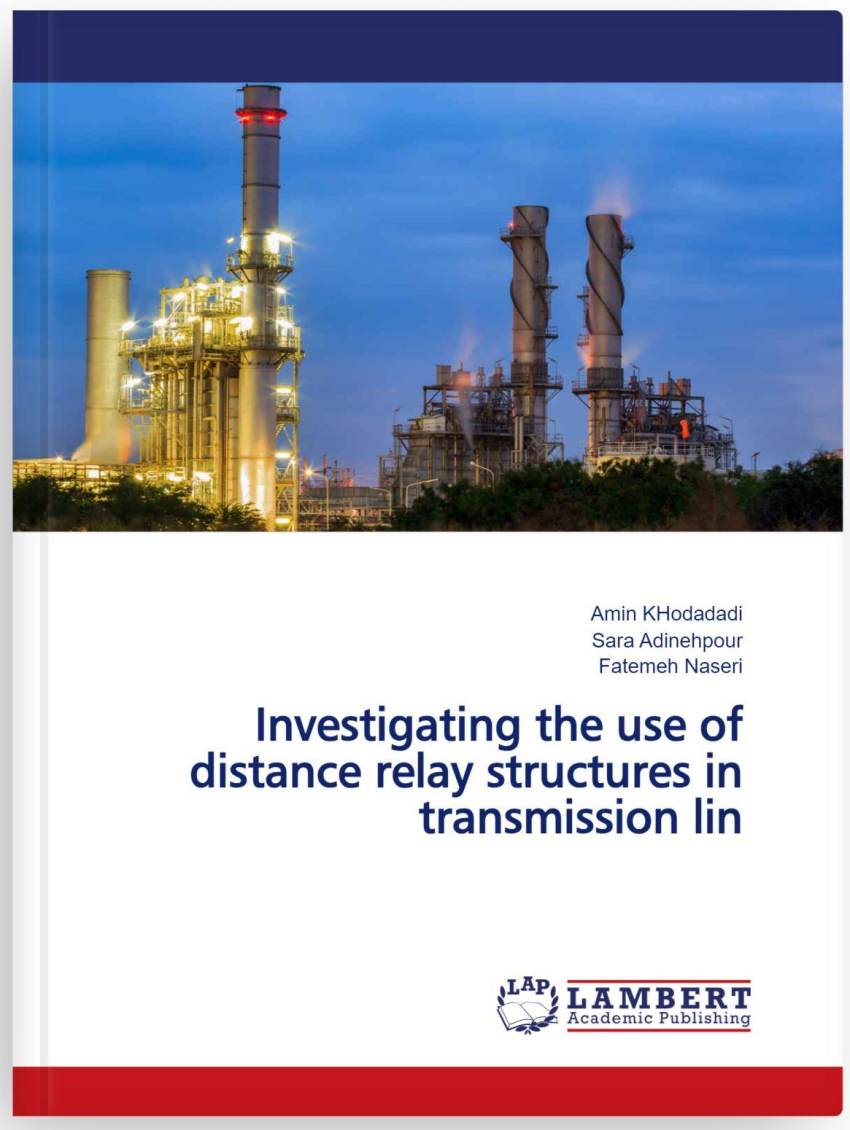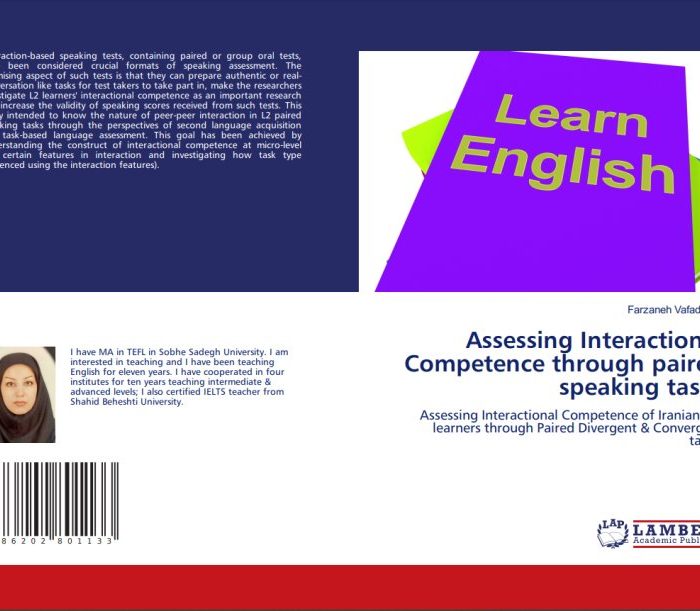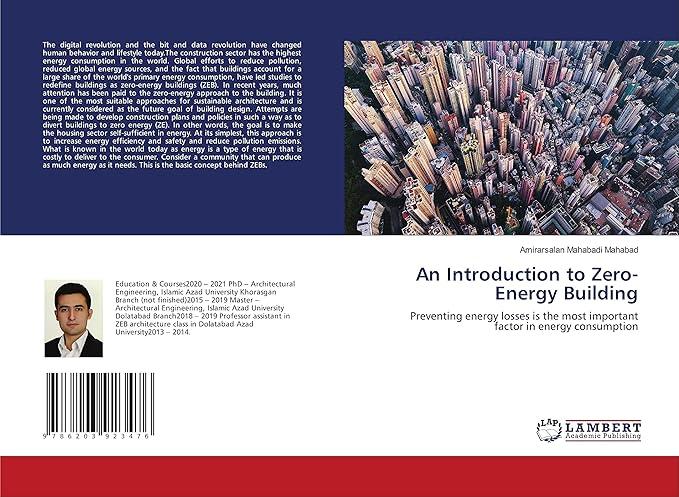کتاب Investigating the use of distance relay structures in transmission lines
۳۶۰,۰۰۰ تومان Original price was: ۳۶۰,۰۰۰ تومان.۱۹۸,۰۰۰ تومانCurrent price is: ۱۹۸,۰۰۰ تومان.
| تعداد صفحات | 121 |
|---|---|
| شابک | 978-620-7-46105-9 |
| انتشارات |



کتاب Investigating the Use of Distance Relay Structures in Transmission Lines – پژوهشی در سیستمهای حفاظتی خطوط انتقال
کتاب Investigating the Use of Distance Relay Structures in Transmission Lines به بررسی ساختارها و عملکرد رلههای حفاظتی در خطوط انتقال برق میپردازد. این کتاب یک منبع جامع برای مهندسان برق، پژوهشگران و علاقهمندان به سیستمهای حفاظتی است که نقش مهمی در اطمینان از پایداری و ایمنی شبکههای برق ایفا میکنند.
درباره کتاب Investigating the Use of Distance Relay Structures in Transmission Lines
این کتاب به تحلیل عمیق عملکرد رلههای فاصلهای پرداخته و نقش آنها در حفاظت از خطوط انتقال برق را بررسی میکند. نویسنده با تکیه بر پژوهشهای علمی و مطالعات موردی، نحوه عملکرد این رلهها را در شرایط عادی و بحرانی توضیح داده و کاربردهای عملی آنها را نشان میدهد.
موضوعات کلیدی کتاب
- عملکرد رلههای حفاظتی: بررسی اصول عملکرد رلههای فاصلهای در شبکههای برق.
- پایداری شبکه برق: تحلیل نقش رلهها در حفظ پایداری و جلوگیری از قطع برق در شرایط بحرانی.
- ساختار و طراحی رلهها: مطالعه اجزای مختلف رلههای حفاظتی و تکنولوژیهای مرتبط.
- مطالعات موردی: ارائه مثالهای واقعی از استفاده رلههای حفاظتی در خطوط انتقال.
- پیشرفتهای تکنولوژیک: بررسی تکنولوژیهای نوین در طراحی و عملکرد رلهها.
ویژگیهای برجسته کتاب Investigating the Use of Distance Relay Structures in Transmission Lines
- رویکرد علمی و عملی: ارائه اطلاعات جامع و کاربردی برای مهندسان و پژوهشگران.
- پوشش تکنولوژیهای مدرن: تحلیل پیشرفتهای اخیر در زمینه سیستمهای حفاظتی.
- مطالعات جامع: بررسی عملکرد رلههای حفاظتی در شرایط مختلف شبکههای برق.
- ساختار آموزشی: ارائه مفاهیم پایه تا پیشرفته با زبان ساده و قابل فهم.
چرا کتاب Investigating the Use of Distance Relay Structures in Transmission Lines را بخوانید؟
این کتاب منبعی ارزشمند برای درک عمیق سیستمهای حفاظتی خطوط انتقال برق است. اگر به دنبال یادگیری عملکرد رلههای حفاظتی، بهبود ایمنی شبکههای برق و آشنایی با تکنولوژیهای پیشرفته این حوزه هستید، این کتاب راهنمای کاملی برای شما خواهد بود.
مخاطبان کتاب Investigating the Use of Distance Relay Structures in Transmission Lines
- مهندسان برق: متخصصانی که در زمینه طراحی و نگهداری شبکههای برق فعالیت میکنند.
- دانشجویان مهندسی برق: علاقهمندان به یادگیری اصول و تکنیکهای پیشرفته در حفاظت از خطوط انتقال.
- پژوهشگران حوزه انرژی: افرادی که به دنبال مطالعات علمی و تحقیقات در زمینه سیستمهای حفاظتی هستند.
- شرکتهای برق و انرژی: مدیران و کارشناسانی که مسئولیت پایداری و ایمنی شبکههای برق را بر عهده دارند.
سفارش کتاب Investigating the Use of Distance Relay Structures in Transmission Lines
برای خرید کتاب Investigating the Use of Distance Relay Structures in Transmission Lines و بهرهگیری از دانش بهروز در زمینه سیستمهای حفاظتی، به بخش فروشگاه سایت مراجعه کنید یا با ما تماس بگیرید. این کتاب راهنمایی جامع برای ارتقای ایمنی و کارایی شبکههای برق خواهد بود.
📘 پرسش و پاسخ درباره کتاب Investigating the Use of Distance Relay Structures in Transmission Lines
🔹 فصل اول: حفاظت عمومی در شبکههای توزیع
❓ ۱. حفاظت در شبکههای توزیع چیست؟
🔹 حفاظت در شبکههای توزیع به مجموعهای از اقدامات گفته میشود که برای جلوگیری از خسارت به تجهیزات و حفظ ایمنی شبکه به کار میرود. این شامل استفاده از رلهها برای شناسایی و قطع جریانهای معیوب است.
❓ ۲. انواع رلهها در حفاظت چیست؟
🔹 انواع مختلف رلهها شامل رلههای اضافه جریان (over current relay)، رلههای فواصل (distance relay)، رلههای تفاوت ولتاژ و رلههای فاز هستند. هر کدام برای شرایط خاص شبکه و نوع خطا طراحی شدهاند.
❓ ۳. انتخاب رلهها چه تاثیری در حفاظت شبکه دارد؟
🔹 انتخاب رلهها تأثیر زیادی در زمان پاسخگویی و دقت در شناسایی خطاها دارد. رلههای مناسب میتوانند سیستم را سریعتر و دقیقتر از خطاهای مختلف محافظت کنند.
🔹 فصل دوم: بررسی منابع تحقیقاتی
❓ ۴. رلههای اضافه جریان چیست و چگونه عمل میکنند؟
🔹 رلههای اضافه جریان برای شناسایی و قطع جریانهای اضافی در شبکه استفاده میشوند. این رلهها به محض تشخیص جریان اضافی که از حد تعیینشده بیشتر است، وارد عمل میشوند.
❓ ۵. مکانیزم عملکرد رلههای اضافه جریان چیست؟
🔹 رلههای اضافه جریان معمولاً از دو قسمت تشکیل میشوند: یک قسمت که جریان را اندازهگیری میکند و یک قسمت که زمانی که جریان از مقدار معین فراتر میرود، رله را فعال میکند.
🔹 فصل سوم: شرح روشها
❓ ۶. الگوریتم بهینهسازی در این تحقیق چه نقشی دارد؟
🔹 الگوریتمهای بهینهسازی برای تعیین بهترین راهکارها در سیستمهای حفاظتی شبکه و رلهها مورد استفاده قرار میگیرند. در این کتاب، بهینهسازی مبتنی بر روشهای مختلف از جمله TLBO برای بهبود کارایی سیستمها ارائه شده است.
❓ ۷. الگوریتم TLBO چیست؟
🔹 TLBO (Teaching-Learning-Based Optimization) یک الگوریتم بهینهسازی است که از فرایندهای یادگیری گروهی و تدریس استفاده میکند تا به بهترین راهحلها برای مسائل بهینهسازی دست یابد.
🔹 فصل چهارم: تاثیر رلههای فاصلهای در خطوط انتقال و ترانسفورماتورهای OLTC
❓ ۸. رلههای فاصلهای چگونه در شناسایی خطاهای شبکه عمل میکنند؟
🔹 رلههای فاصلهای برای شناسایی خطاهایی که در خطوط انتقال اتفاق میافتد استفاده میشوند. این رلهها با تحلیل تغییرات امپدانس و تطبیق آن با مقادیر از پیش تعیینشده، خطا را شناسایی کرده و اقدام به قطع مدار میکنند.
❓ ۹. مدلسازی ترانسفورماتور OLTC چیست و چه تاثیری در سیستم دارد؟
🔹 OLTC (On-Load Tap Changer) یک دستگاه برای تنظیم ولتاژ است که در ترانسفورماتورهای قدرت استفاده میشود. مدلسازی OLTC به منظور بهبود عملکرد سیستم حفاظتی در برابر تغییرات ولتاژ و نوسانات انجام میشود.
❓ ۱۰. چگونه میتوان خطاها را با استفاده از روشهای مختلف شبیهسازی و تشخیص داد؟
🔹 در این کتاب، روشهایی مانند تبدیل موجک (Wavelet Transform) و آستانهگذاری تطبیقی (Adaptive Thresholding) برای تشخیص خطاها استفاده شدهاند. این روشها به تشخیص دقیقتر و سریعتر خطاها کمک میکنند.
🔹 فصل پنجم: جبران جریان اعوجاج ثانویه رله فاصلهای
❓ ۱۱. روش حداقل مربعات خطا (LSE) برای جبران اعوجاج ثانویه رله فاصلهای چیست؟
🔹 روش LSE برای کاهش خطاها و اعوجاجهای ثانویه که ممکن است در عملکرد رله فاصلهای تاثیر بگذارد، استفاده میشود. این روش با به حداقل رساندن تفاوتهای بین مقدار اندازهگیریشده و مقدار واقعی، دقت عملکرد رله را بهبود میبخشد.
❓ ۱۲. استفاده از شبکه عصبی مصنوعی در جبران اعوجاج جریان ثانویه چگونه است؟
🔹 در این تحقیق، استفاده از شبکه عصبی مصنوعی برای بهبود دقت در جبران اعوجاج جریان ثانویه رلههای فاصلهای مورد بررسی قرار گرفته است. این شبکهها با یادگیری از دادههای موجود، قادر به پیشبینی و جبران خطاها هستند.
❓ ۱۳. چه تفاوتی میان روشهای مختلف جبران جریان ثانویه وجود دارد؟
🔹 روشهای مختلف جبران جریان اعوجاج شامل روش LSE، شبکههای عصبی مصنوعی، و روشهای مبتنی بر تخمین جریان مغناطیسی هستند. هرکدام از این روشها مزایا و معایب خاص خود را دارند که در تحقیق مقایسه شده است.
🔹 نتیجهگیری
❓ ۱۴. نتایج اصلی این تحقیق چیست؟
🔹 این تحقیق به بررسی و ارزیابی روشهای مختلف در بهبود عملکرد رلههای فاصلهای در خطوط انتقال میپردازد. نتایج نشان میدهند که استفاده از روشهای بهینهسازی و جبران اعوجاج جریان ثانویه میتواند دقت و کارایی رلهها را به طور چشمگیری افزایش دهد.
📌 این پرسشها و پاسخها برای مرور و درک بهتر مفاهیم کلیدی کتاب Investigating the Use of Distance Relay Structures in Transmission Lines طراحی شدهاند. امیدواریم مفید واقع شوند! 😊
| تعداد صفحات | 121 |
|---|---|
| شابک | 978-620-7-46105-9 |
| انتشارات |
محصولات مشابه
-
کتاب Assessing Interactional Competence through paired speaking tasks
۲۷۶,۰۰۰ تومانOriginal price was: ۲۷۶,۰۰۰ تومان.۱۷۹,۴۰۰ تومانCurrent price is: ۱۷۹,۴۰۰ تومان. -
کتاب Automated software debugging solutions
۲۱۰,۰۰۰ تومانOriginal price was: ۲۱۰,۰۰۰ تومان.۱۵۷,۵۰۰ تومانCurrent price is: ۱۵۷,۵۰۰ تومان. -
کتاب An Introduction to Zero-Energy Building
۲۳۱,۰۰۰ تومانOriginal price was: ۲۳۱,۰۰۰ تومان.۱۵۰,۱۵۰ تومانCurrent price is: ۱۵۰,۱۵۰ تومان. -
کتاب The First-grade and Family
۳۵۱,۰۰۰ تومانOriginal price was: ۳۵۱,۰۰۰ تومان.۱۹۳,۰۵۰ تومانCurrent price is: ۱۹۳,۰۵۰ تومان.













